How the transmission works
The Video Course teaches you everything about modern cars.
Driving through a propeller shaft
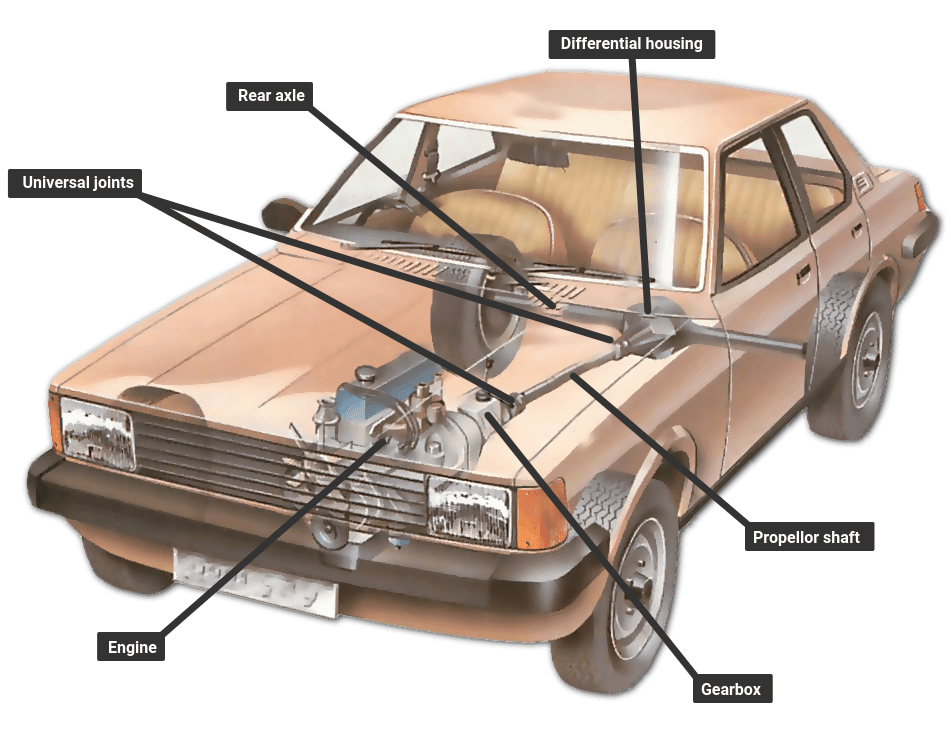
In a front-engined rear-wheel-drive car, power is transmitted from the engine through the clutch and the gearbox to the rear axle by means of a tubular propeller shaft.
The rear axle must be able to move up and down on the suspension according to variations of the road surface.
The movement causes the angle of the propeller shaft, and the distance between the gearbox and the rear axle, to change constantly.
To allow for the constant movement, splines on the front end of the propeller shaft slide in and out of the gearbox as the distance changes; the shaft also has universal joints at each end, and sometimes in the middle.
The universal joints allow the propeller shaft to be flexible, while constantly transmitting power.
The last part of the transmission is the final drive, which incorporates the differential and is sometimes called the differential.
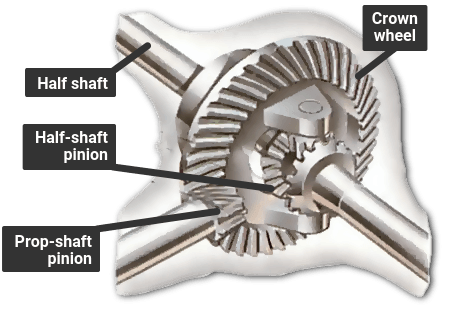
The differential has three functions: to turn the direction of drive through 90 degrees to the rear wheels; to allow either rear wheel to turn faster than the other when cornering; and to effect a final gear reduction .
A pinion gear inside the differential is driven by the propeller shaft and has its gears bevelled - cut at an angle. It meshes with a bevelled crown wheel so that the two gears form a 90 degree angle.
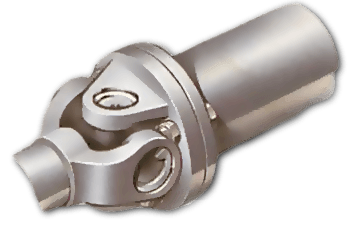
The crown wheel usually has about four times as many teeth as the pinion gear, causing the wheels to turn at a quarter the propeller-shaft speed.
The drive is transmitted from the differential to the rear wheels by means of half shafts, or drive shafts .
At the differential end of each half shaft, a bevelled pinion gear is connected to the crown wheel by means of an intermediate set of bevel pinions.
Driving through the front wheels
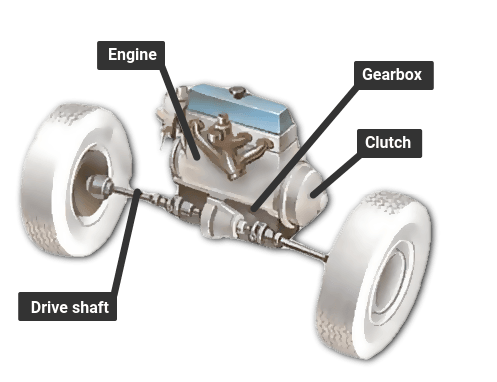
Front-wheel-drive cars use the same transmission principles as rear-wheel-drive cars, but the mechanical components vary in design according to the engine and gearbox layout.
Transverse engines are normally mounted directly above the gearbox, and power is transmitted through the clutch to the gearbox by a train of gears.
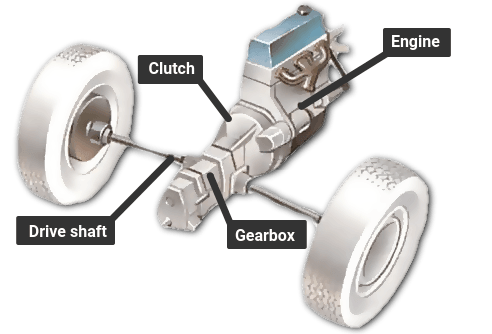
In-line engines are mated directly to the gearbox, and drive passes through the clutch in the normal manner.
In both cases, drive passes from the gearbox to a final-drive unit.
In a transverse-mounted engine, the final-drive unit is usually located in the gearbox. In an in-line engine, it is usually mounted between the engine and the gearbox.
Power is taken from the final-drive unit to the wheels by short drive shafts. To cope with suspension and steering movement in the wheels, the drive shafts use a highly developed type of universal joint called a constant-velocity (CV) joint.
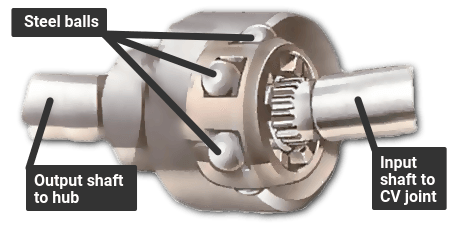
A CV joint uses grooves with steel ball bearings in them instead of the `spider' found in a universal joint, and transmits power at a constant speed, regardless of the angle and the distance between the final-drive unit and the wheels.
Some cars, such as earlier Minis, also have drive-shaft couplings which are 'spider' joints, and do the same job as universal joints in rear-wheel-drive cars, allowing up-and-down movement of the suspension. They are usually made of rubber bonded to metal.
Rear engine driving rear wheels
Some cars, such as VW Beetles and smaller Fiats, have rear-mounted engines and gearboxes, driving the rear wheels.
Power is transmitted through the clutch to the gearbox, passing to the wheels through drive shafts.
The layout is similar to some frontwheel-drive cars, except that no allowance need be made for steering movement of the wheels.
Sometimes the shafts are connected to the flanges at the gearbox by `doughnut' couplings.
The Ultimate Car Mechanics video course
Learn everything about modern cars from our new video series.
Learn more >-
We build a Mazda MX5 Miata from scratch
We start by tearing down and then rebuilding the whole car.
-
Every part explained
There's ridiculous detail on every part. Clearly and easily explained.
-
All modeled in 3D
We've created the most detailed 3D model ever produced so we can show you everything working.






